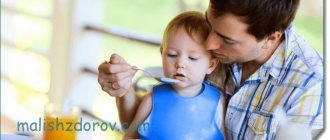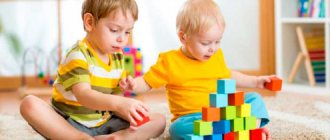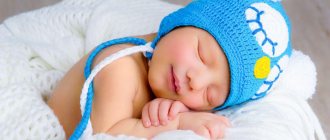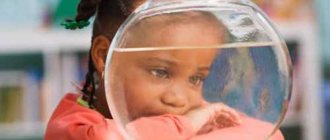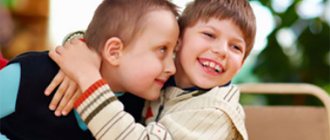At the age of 2 years, a child’s personality is formed; many parents begin to compare their children with their peers. Some spoke faster, while others were already identifying the primary colors. Parents are interested in what their toddler should learn by the age of two.
The level of early development of a child at 2 years old largely depends on normal, timely learning, which will be discussed in this article.
What does a child look like at 2 years old?
By the second year, the child’s weight reaches 12-13 kilograms, and his height approaches 87 cm. These parameters are approximate and depend on heredity. Not all children develop at the same age.
If the baby's height or weight is not within the generally accepted standards, do not worry.
In the second year of a child’s life, weight increases by 200-250 grams every month, and height by 1 centimeter.
The average weight gain per year is 2.5 kg, and height is 10 cm. There is a big difference between a child of 2 and 2.4 years or 2.7.
Physiological changes
- the growth of head circumference slows down, the growth of the limbs increases: the legs become long and slender, all the proportions of the child change;
- the shape of the face loses its roundness and becomes more elongated;
- the ossification process is completed. The spine and skull are already quite strong, although dimples are still visible on the bends of the elbows, as well as infantile folds, which will soon give way to developed muscles;
- fat pads on the toes and the inside of the foot begin to disappear, thus flat feet disappear;
- the amount of fatty tissue in the body decreases: the figure becomes slimmer, chubby cheeks disappear, and a protruding tummy disappears;
- a general strengthening of the body occurs, the muscles become stronger and more elastic, the body of a two-year-old child becomes more and more like an adult.
- The ligaments have noticeably strengthened, although the baby still gets tired quickly and needs a break to recuperate;
- The chest circumference of girls becomes wider than that of boys.
What's wrong with prohibitions?
Until the age of 5-7 years, the child’s brain is not yet mature enough to adequately perceive prohibitions. This does not mean that until the age of 5 you will not say the word “no” at all. Unfortunately this is not possible. But you need to say this word as rarely as possible.
Our eldest daughter is now almost 4 years old. And she already knows “no” very well. And even - lo and behold! - in most cases she listens well. But even now, at 4 years old, any restrictions are difficult for her. And if I start saying “no” often, whims, hysterics and all the signs of overexcitation begin. This is at 4 years old! What can we say about a two-year-old baby?
In fact, at 1-3 years old, prohibitions are not so scary - the child easily ignores them. At this age, the correct strategy is: “You cannot scold or reprimand your child for not listening.”
Children under 5 years old should not be scolded at all. At this age, the baby will never understand that you “love him very much, but are angry at his bad behavior.” And the only thing you will achieve is that the child will feel bad and unloved.
Baby care
At 2 years old, the main thing in a baby’s routine is regularity. If a child attends kindergarten, then at home it is also necessary to adhere to the schedule of the educational institution.
Approximate daily routine for a 2 year old child
- 7-8 hours – breakfast, water procedures, small games and a walk of 1-2 hours depending on the weather;
- 12 hours – lunch, daytime sleep 1.5-2 hours;
- 15:00 – afternoon snack and outdoor games;
- 19:00 – dinner, quiet games;
- 21 hours - water treatments and night sleep.
Day and night, the baby is actively developing, and good sleep strengthens the child’s body.
Nutrition
A 2-3 year old child eats 4-5 times a day. The baby moves a lot and we must provide his body with carbohydrates, which are contained in cereals: pearl barley, buckwheat, oatmeal, corn, wheat. Semolina and rice cereals also contain carbohydrates, but slightly less. Don't forget about fruits and vegetables.
It is important to provide the growing body with the necessary amount of proteins, fats and carbohydrates. There is no need to give low-fat cottage cheese or kefir; fats are necessary for the proper development of the brain and nervous system.
A child's diet must include: cereals, meat, fish, vegetables, fruits, milk, cottage cheese, kefir. It is better not to include or minimize confectionery products in the diet.
This terrible permissiveness
How tired I am of responding to indignant comments on my posts that threaten my children with a terrible future because of our “permissiveness”! I’m tired of it, because to almost every post on social networks about my attitude towards the oil spilled by the one-year-old or about harmless pranks, there is someone “not indifferent”. And every time you have to write the same thing. Sometimes I just want to ignore the comment... But then I understand that it is important to repeat it. Repeat many times. So that some of the mothers have old stereotypes destroyed.
So, the good news: your child is not in danger of permissiveness. It is simply impossible to organize it. Impossible. If you are a normal mother, you will not allow your baby to play with fire, climb out of the window, run along the roadway, etc. So your child’s behavior will have some kind of boundaries in any case. And he will begin to master them from birth.
From birth, a child is faced with the fact that life is not always as one would like. Even if you practice natural parenting, breastfeed at the first squeak and carry your baby in a sling around the clock. From the first months, the child is no longer allowed to do anything.
For example, a baby should not roll over at the edge of the sofa. If he turns over like that, he will fall. However, no normal mother would try to convey this to a three-month-old baby.
Imagine a mother waving her finger menacingly in front of such a baby and saying: “Impossible!!” And then, when the child finally fell, she said: “Why don’t you listen?!” How naughty you are! Now you will know! I see that you understand everything! Your eyes are already smart, and you pronounce “aha” perfectly! You understand everything, but you don’t listen! Who will grow out of you?!”
About the same thing happens even when the child turns one year old. I wrote about this in the article “A 1-year-old child does not listen.” This situation continues at 2 years. And even longer. Although at 2-3 years old the baby already reacts to many prohibitions. And it seems that he is already so smart... He reacts to many of your words and prohibitions, but... Not to everything.
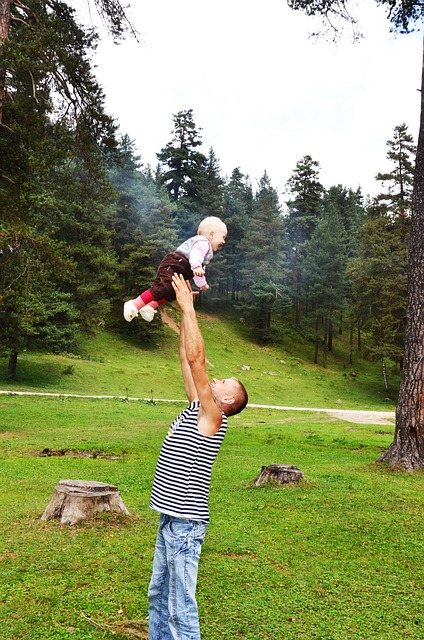
Neuropsychic development
The psyche of a two-year-old child is completely open to receiving new information. She has reached the stage when the baby absorbs everything like a sponge. The main thing is to know how to develop correctly.
A two-year-old child instantly assimilates new information, does not forget or lose sight of anything. The most favorable period has come for the most effective mental development.
Now the baby is at the sensory stage of mental development. Movements become more conscious, confident and purposeful. Sensory motor skills become the basis for the formation of other, more complex mental functions.
With the right approach to development, a child between two and three years old should learn:
- reproduce simple logical actions: independently assemble a pyramid, build a simple tower, assemble a construction set appropriate for the age category;
- maintain attention on any action for a long time: listen to fairy tales, look at pictures, draw, do modeling, play with sorters and other educational toys;
- imitate parents: do housework with mom, try to talk on the phone, repeat simple dance movements;
- know and say your name and the names of your relatives;
- know the purpose of objects, understand that things and actions have a certain meaning.
Intellectual development is noticeable: a child of 2 years is able to solve puzzles and logical problems, but more often his logic is unique.
A lot of energy is spent on mental activity, children get tired quickly. When developing a 2-year-old child at home, it should be taken into account that educational games or activities should not last more than 30 minutes.
Baby psychology
The development of a 2-year-old child allows the psyche to fully open up to receive new information. Of course, before your child was also interested in many things, but curiosity of this kind was subordinate to instincts, not reason. The psychological development of a 2-year-old child has reached the stage when he instantly assimilates new information and practically does not forget anything. This is the most fertile period for maximum effective development. Mastering skills is quite easy, and they are remembered for the rest of your life.
The mental development of 2-year-old children allows them to well understand simple stories from adults, for example, about events that have happened. In the game, kids reproduce simple logical actions. They happily take on the construction of towers or pyramids.
The development of a child at 2 years old is such that he can already hold a pen (pencil). The time has come to introduce him to creativity. Collaborative drawing lessons are very useful. Guide your baby's hand and let him make some squiggles on his own. Despite the fact that the first drawings are illegible and abstract, their role in the development of the baby can hardly be disputed. At first, it is recommended to give your child felt-tip pens - they are not only bright, but also very light, so working with them will not require significant effort.
A two-year-old child is already much more diligent than 6-12 months ago. He will be able to keep his attention on any action even for half an hour, especially if you are involved in the process. During this period, it is recommended to purchase your baby’s first puzzles and construction sets (however, do not choose toys with small parts). Girls will enjoy playing with dolls. Kids are already able to figure out what they like and what they don’t. It is not easy to distract them from an activity they like and it is also difficult to interest them in a new one.
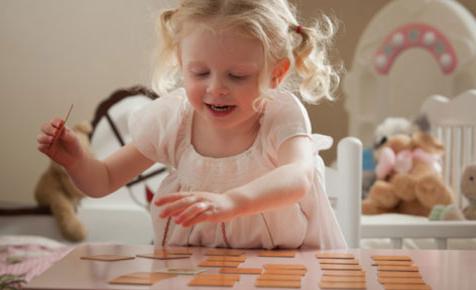
Children as young as two years old readily take part in adult activities. This period is the best suited for unobtrusive labor education. It is possible to transform joint work around the house into a system. In this case, parents will need great patience, because it is much easier, for example, to wipe the dust themselves, but the baby also needs to learn. Let's list the basic everyday skills:
- The baby washes his face, washes his hands and uses a towel with a little help from his mother.
- Helps adults clear the table after meals.
- Spilled liquid can be wiped off with a sponge.
- Eats thick food on its own.
- Watering flowers.
- He tidies up his room and puts away his toys.
Physical development
A two-year-old needs daily physical activity, it helps the body become more resilient and stronger.
Features of physical development
- go up and down the stairs at a side step, holding the handrail or the hand of an adult;
- step over obstacles;
- squat and bend without losing balance;
- to climb deftly;
- jump and run;
- kick, throw the ball and try to catch it;
- puff out your cheeks and suck them in;
- control your lips, stretch them into a smile or pull them out like a straw;
- lift objects lying on the floor;
- gives preference to the dominant hand;
- hold a pencil in your hands, draw straight lines with it or draw an oval.
All this allows a 2-year-old child to perfectly navigate space and feel independent.
In the period from 2 to 3 years, due to the active development of muscle mass, coordination, and balance, the child will master a number of the following skills:
- jumping from the floor on one and two legs;
- walking on toes;
- overcoming small obstacles up to 50 cm;
- the ability to maintain balance while standing on one leg (they don’t feel confident enough, so they intuitively help themselves with their arms spread in different directions);
- riding a scooter or tricycle.
Physical exercise increases immunity, improves blood circulation, and helps the child adapt to kindergarten. In the process of outdoor games, children acquire new skills and improve the skills they already have.
From the age of two it is easier to teach a child to do exercises. You can turn on a children's channel that shows simple physical exercises.
Physical education for a 2-year-old child should be in a playful form. The whole family needs to do it.
To develop physical abilities in a 2-year-old child, you can use a variety of games with a ball: “Edible - inedible”, rolling the ball along a certain trajectory, football, throwing the ball up, throwing the ball from hand to hand.
During the game, the grasping reflex develops, the ability to accurately and quickly calculate each movement is formed. For the full physical development of a child at 2 years old, it is useful to overcome various obstacles.
Choosing the right toys
To raise and develop a 2-year-old child, you need to buy educational toys. From the age of 2, a child begins to play out various stories with the help of toys. The job of parents is to teach and organize this or that game. Then, with the help of toys, the baby will begin to comprehend everything new in this world faster and better.
You can make wonderful toys yourself from scrap materials that have different tactile sensations (these are bags, boxes with materials that feel different to the touch), so that the baby can touch, take out, and put everything away. During the game, the names of colors and shapes of objects are remembered, and the necessary skills are developed.
Raising a child at 2 years old is an interesting and unique period of life. And all that parents need here is to be patient and learn to understand their baby.
Speech development
At the age of two years, a child should be able to say hello and goodbye, perceive simple sentences and requests, form several words into sentences, formulate his requests, for example: to go potty or want a drink.
Parents can playfully help their child expand their vocabulary, thereby speeding up speech development.
It is recommended to name the processes you are running. For example, “I will take a spoon”, “I will put a mug”, etc.
Tongue twisters and sayings are very helpful for the development of a child’s articulatory apparatus. With their help, the baby will quickly learn to speak in large, complete sentences.
How to develop speech for a 2 year old child
- “Whistle or pipe” First, you can take a whistle; to get a sound, you just need to blow into it. After mastering the whistle, you can show your child the pipe. The exercise trains breathing.
- “Who takes longer?” Any vowel sound is chosen, and whoever lasts the longest wins.
- “Wash” The exercise takes 2-3 minutes. In front of the mirror, you should show the baby how to make faces: stretch out your lips with a tube, say the sounds “vo”, “mo”, “o”, etc.
- “Finish the word” You only need to say the beginning of the word, the second half must be completed by the child himself. These can be any objects that surround you during the game: “pe-juice”, “bucket-ro”, “store”, etc. Exercise develops memory, speech and attention.
- “Animal Voices” During the game, the child develops an idea of animals and expands his vocabulary. You can use cards or cubes, take your child to the zoo, or record the voices of various animals. The rooster crows, the duck quack-quacks, the crow caw-crows, the cat meow-meow, etc.
There are quite a lot of exercises aimed at the proper development of a child at 2 years old. You can alternate them or choose the most suitable ones at the moment, based on the interests and general development of the child.
How to raise a child at 2 years old
At this time, the child begins to walk and talk on his own, which means his field of activity increases. The child climbs into tables, opens drawers, often falls, and gets the first bumps in his life. No active child can avoid this.
The child continues to study everything that is near him. At this age, the character of a little man is formed and the child’s most active development occurs intellectually, as well as the accumulation of his vocabulary.
Communicate with your child more often . Read poetry, discuss your actions and his actions out loud, answer what the name of this or that object is. Moreover, the more often and more the parents talk to the child, the faster their baby will learn to pronounce words and phrases, and the more correctly the phrases will be constructed. The main mistake parents make is when they deliberately distort words in a conversation with a child. All this leads to tongue-tiedness and burr. Another mistake is to greet every phrase the child says with laughter.
Teach your child by example . Don't forget that your child copies your behavior and communication style. Starting from the second year of his life, the baby consciously repeats the speech and every action of people close to him. The guys perfectly copy both the intonation they hear in a voice and the words they hear, even if they are unfamiliar. In families where there are quarrels, arguments, scandals, where they do not pay attention to moral concepts, the child will reproduce exactly the same line of behavior. And in families where absolutely all family members speak peacefully, friendly and affably to each other, the correct concepts about family and morality are already formed in the upbringing and development of a child by the age of 2.
Be understanding . When your child is naughty, cries, and does not want to leave the playground, understand him and gently explain that you imagine how difficult it is to give up an exciting game, but it’s time to go home. The idea is to let your baby know that you are on his side. Don't get annoyed or swear, even if you feel uncomfortable in front of other parents.
Establish rules and a certain rhythm of life from this age. If the daily routine is present in the upbringing of a child of 1–2 years of age, then it will be easier for him later. When a child lives according to a schedule, then at a certain time he develops an appetite, and he happily eats everything that is offered to him, falls asleep calmly and without whims; he spends a lot of time outdoors. In addition to all this, at an early age, for normal physiological development and prevention of overwork, it is simply necessary to correctly alternate between active games and rest. In most cases, it is lack of sleep or overwork that causes children's whims, hysterics, and disobedience.
Sound, healthy children's sleep is of great importance, as it predetermines the proper development of the nervous and mental systems. Remember that a sound sleep should be preceded by a balanced state of the baby, so avoid moving and active games immediately before bedtime. If a child is stubborn, then you need to captivate him with something. If he doesn’t want to go to bed, then, while changing your child’s clothes, explain what you will do after bed, where you will go, what interesting things you will see. This is more pleasant and much simpler than the order “go to bed.” And, you see, it is more consistent with the principles of raising a child at 1–2 years old.
Praise your child for good behavior. Set basic rules and praise your child for following them. Model the right behavior. Patiently show your child how to behave correctly. Create conditions for good behavior, for example, plan the child’s space so that it is convenient for him to play and collect toys.
Tell your child what he can do instead of what he can't do. For example, if a child wants to eat candy before lunch, don't say it's bad for you, tell him he can eat an apple or orange now.
Give your child the right to choose . This will allow the baby to feel some freedom, and you will be able to keep the process under control. Offer your child a few blouses to choose from when you go for a walk, a few books when you go to bed, etc.
Try to avoid situations that can cause whims , an “outbreak” of disobedience. For example, if you have planned to meet a friend and are going to her with your child, then do it in the fresh air, for example, in a park. There is no need to expect him to behave calmly while you chat over a cup of tea in a cafe - the baby will simply be bored.
Help your child understand the world around him . He is interested in everything, he wants to touch everything, try it by heart, listen to how each object plays, what it feels like, what can be done with it. Don't disturb the little explorer! Do not take everything from him, forbidding him to touch a book, pen, or cosmetic bag. If there are objects in the house that are truly dangerous for the baby (sharp objects, lighters, knives, etc.), simply remove them in advance and put them out of the reach of his hands and eyes.
Teach your child to eat and dress independently . Do not rush to take the spoon away from your baby, but encourage his desire for independence. When you put something on your child, don’t rush or be nervous, and don’t scold your baby. He will learn everything if he calmly watches your leisurely actions.
Fine motor skills at 2 years old
Scientists have proven that the development of fine motor skills is closely related to the development of speech.
Fine motor skills have an impact on the nervous system, memory, attention and visual perception. The child’s motor skills develop gradually, initially the movements are inept and awkward.
To improve skills, it is recommended to use educational games and exercises.
Activities to develop fine motor skills
- All kinds of constructors. Large colorful details will interest the child and have a beneficial effect on the development of perseverance and spatial thinking. Fans of construction kits learn physics and mathematics more easily, have excellent orientation and do not risk getting lost anywhere.
- Buttons, zippers, laces. If you repeat and demonstrate certain manipulations over a long period of time, over time the baby will be able to master the process of dressing.
- Improvised means as toys. These can be buttons, spoons, cereals and other small items that are safe for the baby. With their help, imagination develops and hand motor skills improve. Of course, you need to practice under the supervision of your parents.
- Drawing is another great way to develop fine motor skills in children. The first drawings will be formless and incomprehensible, but over time the child will master the brush and be able to express his mood or experiences on paper. Psychologists recommend that parents pay attention to their children’s drawings; they can be used to understand the child’s psycho-emotional state. Finger paints are especially good for developing motor skills. m
- Modeling has an impact on the muscles of the hands, thereby developing dexterity and forming imagination. Kids love to use multi-colored plasticine.
Fine motor development is very important at 2 years of age. Not only the child’s further development, but also future schooling depends on this.
Problems of raising a child at 2 years old
The main question that all parents ask during the baby’s first transition period is how to raise a disobedient child. After all, at the age of 2, all children become not only harmful, they experience some personality changes, they begin to see the world differently, not as before. The child grows up, and no matter how funny it may sound for mothers and fathers, for whom their children are always crumbs, they move into adulthood.
Parents will be helped by simple advice and knowledge of the problem; it is also not a sin to contact a child psychologist to hear information and read all the necessary literature about the transitional age of 2 years. It is not necessary to take your child to the doctor, but attending several consultations on your own means helping your child cope with the first problems of life, learning how to properly raise your baby, and finding a way out of some difficult situations.
At 2 years old, children become more reasonable, and their main task is independence. That is, understanding the world through one’s own efforts and studying the environment without the help of adults. And any prohibitions and rules only hinder development. The mother wants to continue to take care of her, but what about the child’s wishes? Give him freedom, at least partial. Prohibit only what threatens his health or future life. Try not to “mix” the opinions of strangers into your child’s upbringing (you can’t please everyone). Learn to listen and listen, this is extremely important.
Every ban for children under 2 years old is a serious blow to self-esteem and the desire to be independent. Children feel that their rights are beginning to be infringed, they feel discomfort, without fully realizing the reason for it. The brain responds by giving the command to act contrary to the parents, to resist in various ways. Whims, screams, silence and puffy cheeks, broken toys - all these are forms of protest.
One of the main unspoken rules for parents is not to blame yourself for everything, stop reproaching yourself. The transitional age of a child does not depend on parental upbringing, on whether you are strict with the baby or, on the contrary, too soft, on the number of house rules or their absence. Take this for granted, the only thing that mom and dad can do is read the necessary information and be prepared for the fact that they will have to ask themselves the question of how to raise a capricious child.
Crying and tantrums that accompany the age of two are quite normal, as well as whims and reluctance to obey your rules. Of course, try to give the baby more space, as well as solving simple and feasible tasks that the child can handle easily. At this age, it is best to start playing a variety of educational games, puzzles, and coloring books. Thus, the desire to cope with assigned tasks alone will be satisfied. You will help to gently shape the child’s character, and you will have to worry much less.
Musical development of a child at 2 years old
The child develops a sense of beauty and has the opportunity to develop a personal taste.
Music has a beneficial effect on the nervous system, personality development, and helps to understand oneself and the world around us.
Turn on musical compositions, it is better if they are accompanied by the mother’s voice. A child hears lullabies and other songs from the first day of his life, so calm music is an integral part of a child’s development.
You can buy a children's piano, drum set, harpsichord and any other toy musical instrument. Press the piano key several times and ask the baby to repeat; this game is very captivating for the child and develops his hearing.
Physical development of a 2-year-old child
The physical development of a child at 2 years old, namely a boy, includes several aspects. Which ones will be discussed below:
Boys at 2 years old, according to domestic pediatrics, weigh from 10.9 to 14.6 kg. According to WHO, these parameters differ - 9.8 kg to 15.4 kg. The height parameters are approximately the same - from 82 cm to 93.9 cm. The head circumference of boys is approximately from 45 cm to 51.7 cm; breasts, according to domestic pediatricians, reach sizes from 48.3 cm to 54.6 cm.
Social development of a child at 2 years old
A two-year-old child actively tries to interact with the environment, contacts adults and other children.
A normally developing child at this age can already:
- go to the potty independently;
- wash your hands and dry them;
- eat and drink;
- brush your teeth and wash your face;
- communicate with peers
- try to dress yourself;
- say your name.
For the development of a child at 2 years old, parents are recommended to use role-playing games. During the game, the child learns to interact with other participants in the process, share toys, and pay attention to surrounding objects.
Experts recommend playing small scenes between family members, actively involving the children themselves in this process.
Difficulties in raising a 2-3 year old child
This period is characterized by the crisis of two years of age. There is a sudden change in behavior for the worse. The main feature of this crisis is hysterical behavior: screams, tears, stubbornness, unprecedented aggression.
From a psychological point of view, at this time you should be very careful about raising a child :
- react calmly, find compromises;
- during a hysteria, it is better to leave the baby alone in the room for a short time so that he calms down faster without an audience;
- explain the reasons for his actions if he objects to them;
- avoid places where the child may become overtired, hungry, or begin to be capricious;
- do not force them to give their toys to other children; at this age, the child does not understand why he should give his favorite things to others;
- Do not scold if the baby feels angry, it is better to hug him and calm him down.
Any situation or problem during this time should be resolved calmly and amicably. Children, no matter how small they are, always feel love, support, respect, understanding and learn this from their parents.
Share with your friends!
Subscribe to our Yandex.Zen channel or Yandex.Messenger
Physical development of a child at two years old
At two years old, the child’s movements become more coordinated,
Indicators of a child’s physical development at this age are very individual, since they depend on many factors (heredity, race, type of constitution, the presence or absence of concomitant pathology, nutritional patterns, and others).
At the age of up to 10 years, the average required body weight is calculated using the formula:
10.5 kg (average body weight of a child at 1 year old) + 2 x n,
Where n is the actual age of the child (in years).
The average body weight of a child at two years of age is:
for boys - 12 - 14.5 kg;
for girls - 11.5 - 13.5 kg.
Growth by 2 years is on average:
for boys - 83 - 88.5 cm;
for girls - 82.5 - 87.5 cm.
At two years old, a child should have 20 baby teeth.
What should a 2 year old child be able to do?
The capabilities of a two-year-old child, in comparison with the knowledge, skills and abilities that he possessed a year ago, amaze not only parents, but also those around him. He begins to speak in sentences, understands adults, is able to perform a range of physical exercises, and even at some points demonstrate independence in everyday matters. It is important for parents to ensure that their child develops harmoniously in all areas of life. To do this, it is important to determine what he must be able to do without fail.
Speech development in a two-year-old child
- The vocabulary at this age reaches 200-300 words, among which there are some that are quite difficult in terms of pronunciation.
- Separately spoken words are replaced by entire, albeit not too long, sentences.
- Simplified words that the child often used before (meow-meow, woof-woof, bee-bee, and so on) are increasingly being replaced by more complex ones (kitty, dog, car, and so on).
- In speech, not only nouns are actively used, but also other parts of speech - at first, pronouns and adjectives, then verbs are “attached”.
- The baby begins to formulate and ask questions.
- The words are compared with the objects shown in the picture - the baby easily names them, and more and more every day.
The most effective ways to teach a child to speak
Psycho-emotional development of the child (including the area of communication)
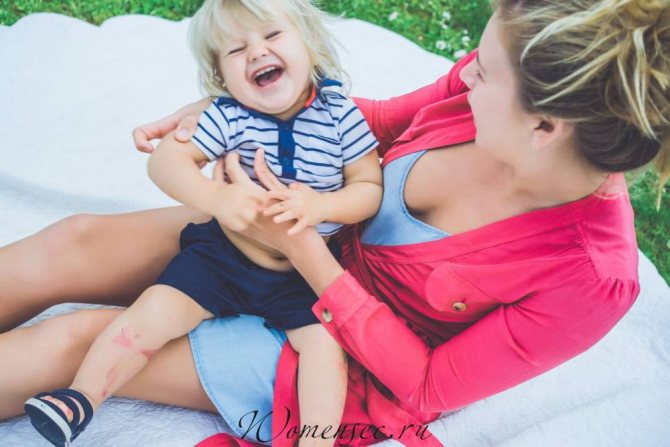
- a two-year-old child willingly makes contact with others and easily makes acquaintances with both children and adults;
- during communication, he actively gestures, tries to convey his emotions with the help of facial expressions, intonation and exclamations;
- actively rejoices at successes and is upset by defeats;
- tries to get his own way, is stubborn and can insist on something;
- is aware of his/her gender identity;
- takes offense and shows his resentment through tears.
For parents, this is not the sweetest period, because while the child cannot say everything he wants and express all his feelings, it is difficult for him, hysterics arise (I want and demand in a way known to me, but my mother does not understand)
, another option, when the child already feels very grown up, because he has already acquired so many skills and begins to act actively, and the parents see the situation more broadly, they stop the baby or prohibit something. Conflict. It is very important at these moments to understand that the child does not do anything out of spite (no matter how it looks from the outside); at this age, those areas of the brain that are responsible for looking at the situation from the other person’s side and predicting the actions and reactions of another have not yet matured. This ability will be formed only by the age of 6-7 years.
It is important that in the process of collisions with you, the child receives different types of responses. So that at one time they would give in to him, at one time they would transfer him into the game, at one time they would come to an agreement, and at another time they would prohibit him and not allow him under any circumstances - everything is like in LIFE. Lyudmila Petranovskaya
If a child is constantly punished for any attempt at self-expression or is indulged in everything for fear of upsetting him, he simply will not be able to master the full variety of strategies for behavior in conflict situations. It’s good when an adult has a set of different behavioral strategies in stock for different cases and he can choose: to give in, bargain, put the squeeze on, or come up with something else. Take all these moments as training for your baby and give different reactions.
Development of the sphere of knowledge
At 2 years old a child can learn:
- distinguish at least 4 primary colors (“ceiling”, as a rule, is 8 colors);
- group different objects by shade: red, blue, green, and so on;
- recognize and possibly name the basic flat geometric shapes (circle, square, rectangle, triangle, and so on);
- compare and recognize objects according to a certain characteristic (heavy-light, soft-hard, big-small, and so on);
- count to ten, recognize numbers and show your age on your fingers (if there is motivation, we started learning numbers and counting closer to 3);
- build and carry out a chain of sequential actions that will lead to the achievement of a certain result.
Physical development
By the age of two, the baby should already:
- walk confidently and run a little;
- overcome stairs and inclined surfaces - up and down (with support);
- jumping (someone masters this skill closer to 3 years!);
- step over low obstacles;
- “balance” on a log;
- play football - kick the ball and catch it;
- try to draw lines on a sheet of paper;
- sculpt from plasticine and begin to use scissors for their intended purpose (under parental supervision, of course).
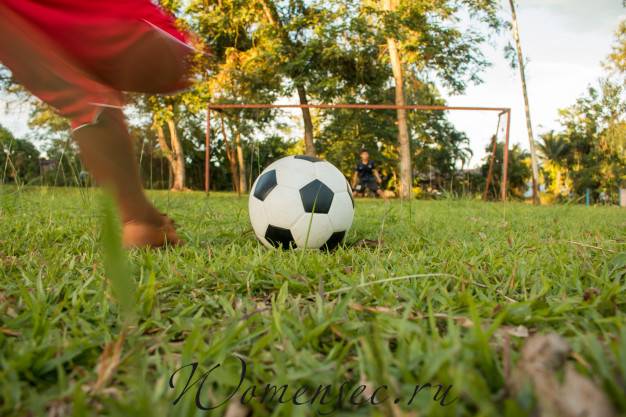
Household skills
And finally, by the age of 2, the child should develop a number of everyday skills and abilities.
- go to the potty;
- eat liquid food with a spoon;
- start washing your hands and face yourself;
- “help” with housework (for example, sorting bags and putting some things back in place);
- wear “simple” wardrobe items (socks, hat, etc.) and use a handkerchief for its intended purpose.
How to help a 2 year old child develop
Firstly, as mentioned above, you can take your child to a club (in a general early development group), engage in creative activities with him (drawing, modeling, crafts, etc.) and select suitable games at home. In addition, you can help your baby develop unobtrusively:
- do not ignore questions and give them as clear (in accordance with age) and detailed answers as possible;
- discuss what you saw while walking, on TV, and just random situations;
- give the opportunity to make choices - what to play, what to buy (not always, of course), what to eat, and so on;
- involve your child in solving “everyday” problems as often as possible and ask him for help - at 2 years old you can be trusted to wash dishes, unpack a bag, sweep the floor, and so on, under supervision.
Social-emotional and mental development of a child at 2 years old
Two year olds can often be stubborn and disobedient. A child may demand something forbidden, and not receiving it, become capricious, scream and cry, attracting the attention of adults and trying to achieve what he wants at any cost. During this period, it is important for parents and relatives to show their child their love and support, but at the same time calmly and confidently suppress any attempts by the child to get his way through tears, hysterics and other manipulative methods.
The mental development of a child at 2 years old is characterized by strong emotionality: the baby shows vivid emotions when communicating with loved ones, which he expresses with the help of exclamations, facial expressions and gestures. When frightened, offended or undesirable events (for example, the mother leaves), the child may cry for a long time, but mostly he is in a good mood, often smiles and reacts very positively to the communication and attention of adults.
At 2 years old, the child begins to imitate adults, copying facial expressions, movements and speech. A child at this age is very susceptible to the assessments of adults: when teaching him something, for a positive result it is necessary to provide support and praise.
When communicating with other children, a two-year-old child also behaves animatedly: he smiles, tries to talk. But some children at this age behave warily with their peers and may stay away from general games and entertainment for some time.
The level of social development of a child at this age does not depend on the experience of communicating with peers or strangers, but on what kind of behavior he observes in his family. If parents and loved ones communicate with each other calmly, without irritation or aggression, then the child will not have problems developing social skills.

